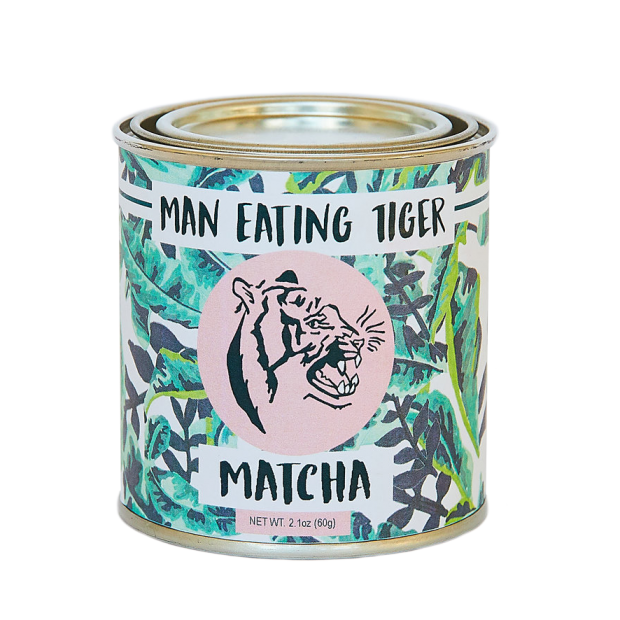
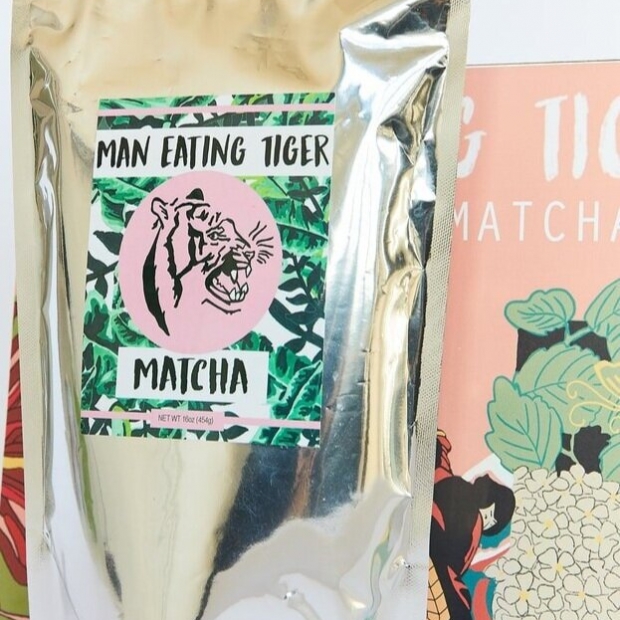
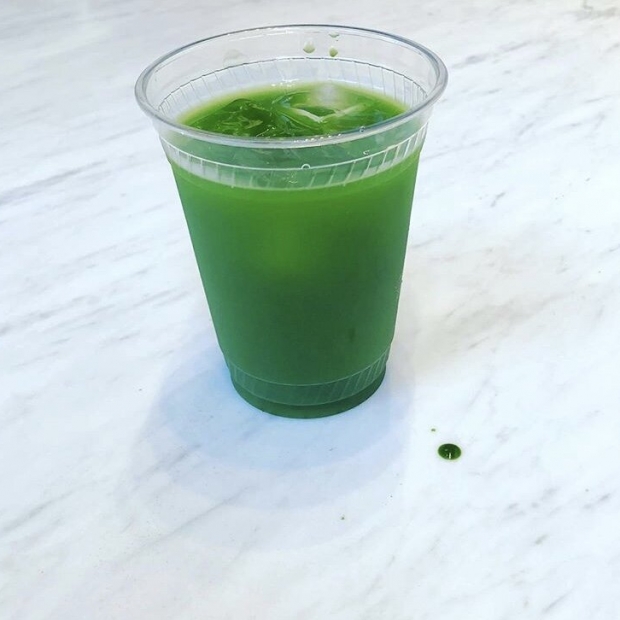
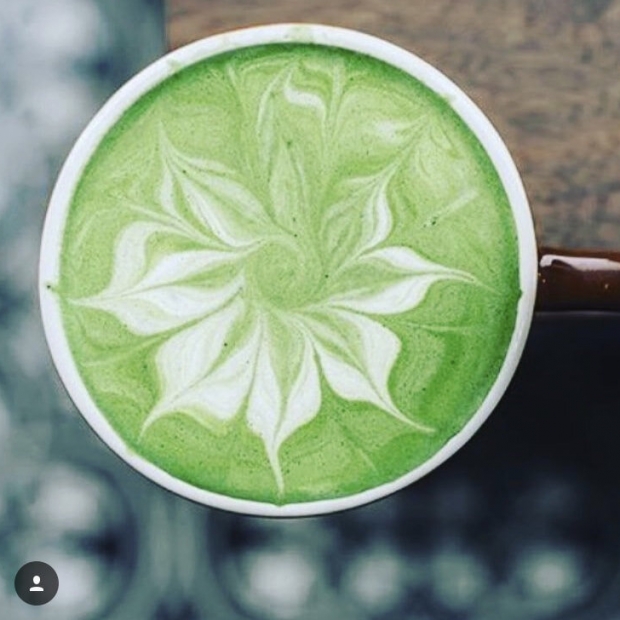
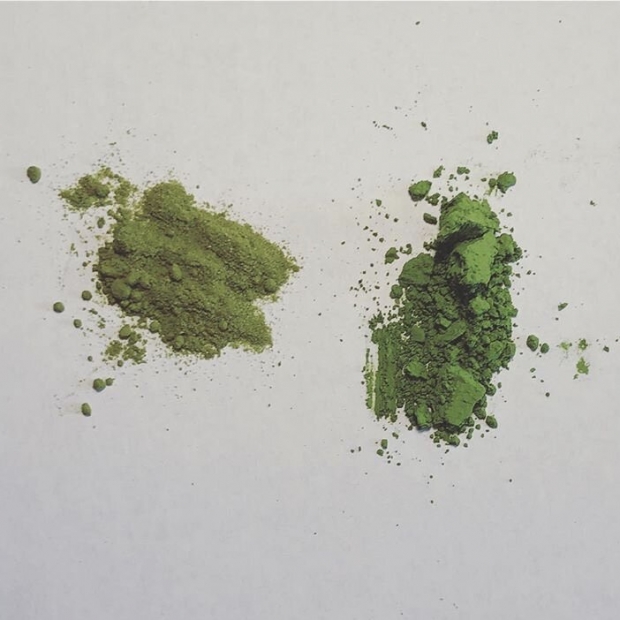
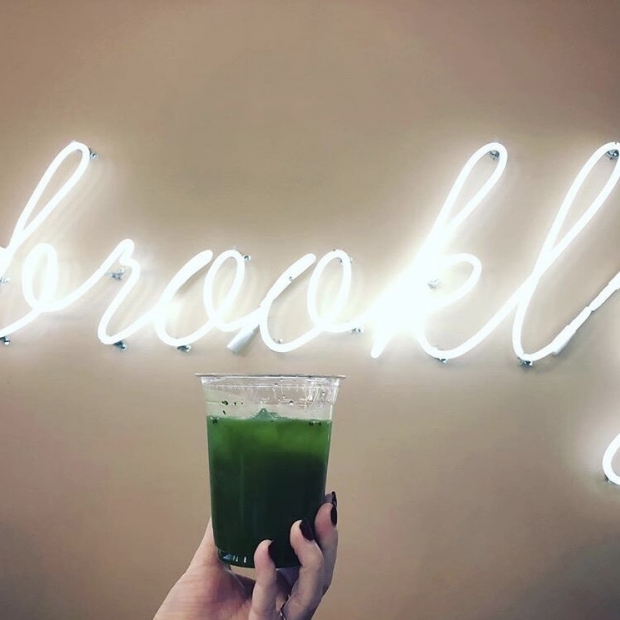
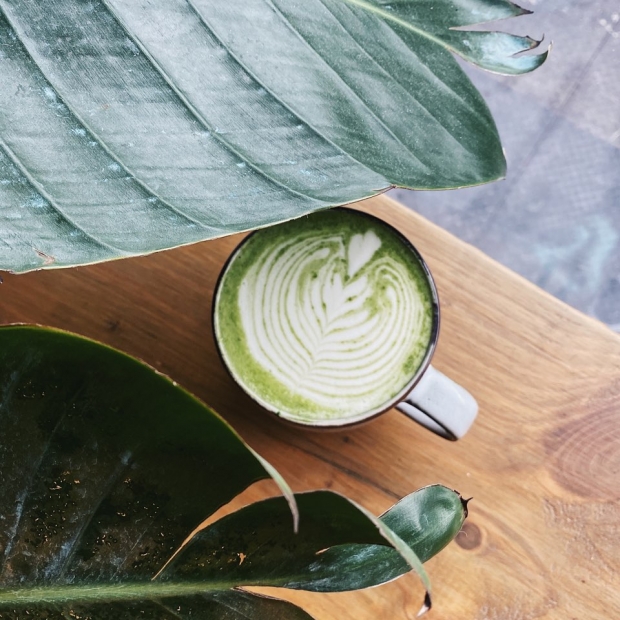
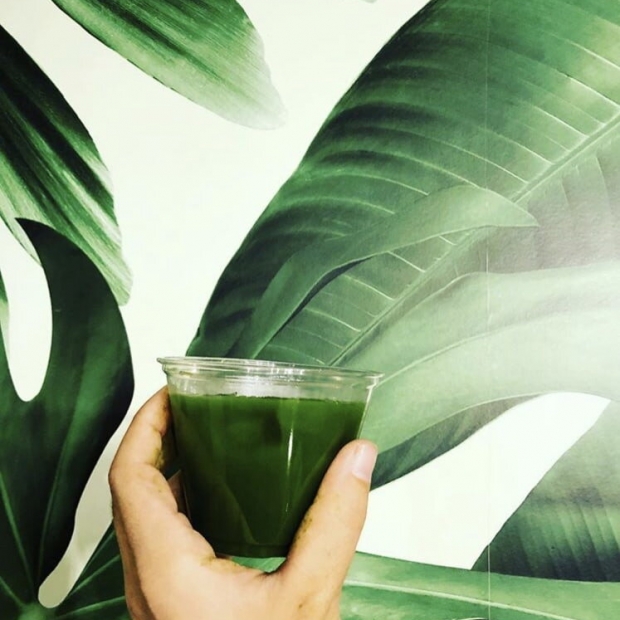
Ceremonial Grade Matcha
$40.00 – $110.00
Our ceremonial grade Matcha is raw and single-sourced from a small family farm in Japan. MET matcha is handpicked, hand-ground, and not mixed with generic green tea or artificial additives. We believe that the natural tasting flavor of our matcha is unique. It is not bitter or chalky like the other teas, which makes it by far the best tasting matcha on the market!
It took us a year and several trips touring Japan’s many matcha farms to source our special tea, so we could offer you better matcha because you deserve it!
Please keep refrigerated once delivered for freshness.
- Matcha naturally Contains 5X the antioxidants of regular green tea.
- Pure matcha* contains EGCg which helps protect the body against bacterial and viral infections
- Chlorophyll helps the body naturally eliminate toxins and heavy metals
How To Get The Best Tasting Ceremonial Grade Matcha
As someone whose morning ritual used to be coffee and cigarettes (yes I know) it got to the point where this nasty habit was starting to affect my health, giving me massive anxiety, stress, and other issues throughout the day.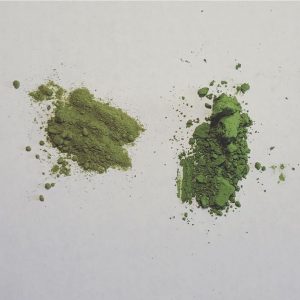
I was looking for an alternative but I couldn’t really find anything that gave me the kick of coffee until my friend Claire turned me into a matcha fan. Every time we would meet each other to write together, she would order matcha, this was way before matcha green tea powder became a craze here. Initially, I thought that it was just a thicker green tea, but in fact, matcha green tea powder has 5x the antioxidants of regular green tea and is naturally caffeinated. Matcha powder is also one of the most powerful immune boosters and antiviral drinks you can have specifically because of its high concentration of EGCG which is known to help prevent cell damage.
Organic Ceremonial Grade Matcha
I started trying different packaged matcha green tea powder from Amazon but wasn’t really a fan of the taste which was bitter and almost felt like I was drinking green dirt water and not like the matcha tea I had at the shop with Claire. She told me that the matcha green tea powder I was ordering online or that is prominent on Amazon is actually culinary grade matcha, and is supposed to be used in baking powder-not for drinking. I don’t know why anyone would try to sell culinary grade matcha to people, which is when she told me that the good matcha powder we had in the shop was produced by a company called Man Eating Tiger and was “ceremonial grade matcha”. This Man Eating Tiger organic matcha or “ceremonial grade matcha” had a much more vibrant green than the matcha powder I had been tasting. This ceremonial grade matcha was thinner and had a natural grassy, yet sweet taste, which is because the ceremonial matcha they use is all handpicked and hand-ground from one of the oldest small family farms in Japan they work with.
The Myth of Matcha Green Tea Powder
Most green tea originates from China, but in and around the 12th Century, Buddhist Monks brought matcha to Kyoto, Japan as the region had the perfect terrain and climate for harvesting matcha. While green tea has to be grown under the sun, matcha green tea is shade grown which increases the chlorophyll. This is why before buying matcha, keep in mind the difference between green tea, matcha green tea, and ceremonial grade matcha powder-so when you see a label that says “Matcha green tea powder” or “Matcha with green tea”, I eventually learned that’s actually not pure or raw matcha. Green tea-grown in the sun. Matcha-grown in the shade. Most green tea powder is grown and processed in China. The truest ceremonial grade matcha is from Japan using tencha leaves* which are the highest quality green tea leaves. Ceremonial matcha involves using the top leaves of the plant, which are deveined, destemmed, and steamed.

The reason most matcha green tea powder on the American market tastes super bitter is that they are actually mixing it with matcha green tea powder from China not tencha from Japan. There is also a misconception about an organic ceremonial grade, which we’ll get to in a little bit.
When Matcha is mixed with other types of green tea and machine ground, this is usually called culinary grade matcha. While some people may balk at slightly expensive matcha, it actually makes sense. Matcha green tea that is too cheap or where the color looks bright green (like neon) or completely diluted-like a yellow-ish, mint color or brown colored matcha, is probably guaranteed to be using artificial ingredients or other types of green tea and processed with chemicals from China. I trust Man Eating Tiger ceremonial matcha because they are using matcha from a single source origin farm in Japan, which is something you should look for when trying to find the best ceremonial grade matcha.
In America, they came up with the name “Premium matcha” which would qualify as second-grade matcha green tea powder and is a mix of culinary grade matcha green tea powder and ceremonial grade matcha. The reason you really want ceremonial grade matcha is that it is using the highest quality green tea leaves or tencha and hand-ground/stone ground. Because of the duration of the shade-grown length and stone-ground process, ceremonial grade matcha is by far the healthiest and purest matcha on the market.
High Quality Matcha of Japan
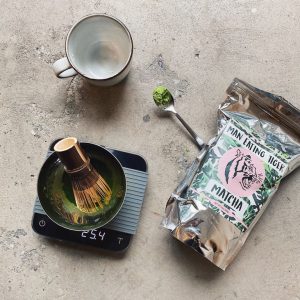
As far as pricing is concerned, the best matcha green tea is going to be and should be expensive. By best matcha green tea, I mean grade A ceremonial. The best matcha green tea has to go through a seasonal harvest where the plants have to survive the shade-grown environment, then they have to be handpicked and stone ground and shipped to America. If you’re seeing matcha that looks like it’s a great deal, think about the shipping rates one would have to pay to get a bulk product to America from Japan. Unlike Japan, China has a sneaky deal with the USPS to easily ship goods into the US for massive shipping discounts. If your matcha is super cheap, well that’s a good hint of where your matcha is actually coming from. And it’s another reason to be vigilant when purchasing your Japanese matcha green tea or ceremonial matcha.
Organic Matcha Differentiation
Let’s now talk about organic matcha. As far as the term “organic ceremonial matcha” or people demanding “organic matcha” in general, this is a little bit of a tricky subject, especially here in the US where we have a skewed idea of what healthy means. The FDA or any food administration run by the US government is catering to the interests of large corporations like Coca-Cola, etc. who add a ton of sugar and an amalgamation of mysterious chemicals into their products. Most of the products in your supermarket are really owned by 5-10 brands that need to produce giant volumes of beverages to the market to turn a profit. For example, have you ever watched a commercial about a new healthy drink that promises tons of health benefits, and then you look at the ingredients in the store and there’s literally 0% of anything healthy? The same thing goes with vitamins that say “Made in the USA”… with foreign ingredients or sourced from foreign ingredients. For 2500 dollars many products can get certified with an organic label. This is applicable to these “organic ceremonial matcha powders” that you would see in a major chain store or on Amazon, but unfortunately, these matcha powders aren’t really organic- in fact, most matcha can’t really be organic given the process required to produce quality ceremonial matcha.
How could that be?! You might be shouting into the void. Why would something be labeled organic if it really isn’t? According to www.japantoday.com organic products in Japan accounted for .4% of the domestic food market. In order to grow matcha, remember the green tea leaves have to make it through the shading process. The only way to do this effectively is by using inorganic fertilizer. The green tea leaves that don’t fully survive the shading process don’t have as many nutrients like the ones that do. This is another way of distinguishing the pure matcha from the lesser quality matcha or culinary grade matcha. Matcha that makes it through the shading process, where the best leaves are handpicked, have a vibrant green color, a sweeter* taste, and a more abundant and healthy concentration of amino acids and L-theanine. Japan has extremely strict rules and regulations on pesticides and the Japanese people have some of the highest standards for their food production, where compared to US standards, the way food is grown in Japan is more “organic” than many of the foods found in the US market with this organic label. This goes back to what I was saying earlier about buying cheap when it comes to health products. If you’re cheap with your health, your health will be cheap with you. This is why it’s actually more important that your ceremonial matcha is of single source origin. Single source origin ceremonial matcha powders from Japan will be more “organic” than other products on your food shelf.
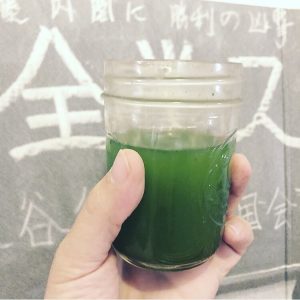
So what does all this mean then? Japan has consistently ranked at the top of the oldest demographic populations in the world and #1 in terms of the longest-living population. There are several factors for this. In Japan, they eat lighter meals and they eat slower. From an early age, they are taught to have a healthy diet that consists of foods that are omega-rich including fish, rice, grains, miso, and assorted vegetables. Only 4% of Japan’s population is considered overweight compared to here which is 36%-and that’s being conservative. Oh! And one more reason people in Japan live longer and are among the healthiest populations-green tea…Specifically matcha tea! According to trafalgar.com matcha powder “helps with digestion, energy levels and regulating blood pressure. The matcha tea even helps to preserve membrane cells and slow cell aging.” Another thing consuming matcha powder does that makes it literally one of the healthiest drinks known to man, is that ceremonial grade matcha tea, and even green tea in general, open up cell inhibitors, so it is easier for zinc to get in, making taking zinc more effective for your body.
Matcha tea is really the green gift from the Gods, or nature, that everyone has easy access to if they want to make a health turn around in their lives like me. With the current state of this Coronavirus crisis, it is truly unfortunate why a virus with a 99% survival rate has killed so many people here. Most deaths can be directly corroborated with pre-existing conditions in the older population and the American diet. There is almost no school food education or healthy alternatives being offered in the public school system. Access to affordable healthy foods in poor neighborhoods is almost nonexistent. Most chains offering chemically induced foods are the easy go-to for many, and as a result, instead of tackling the broader issue of the American immune system, the lack of regulations over the food we eat or what goes into that food, we’ve decided that these new vaccines are just the cure-all, not taking into account future viruses, almost guaranteed to be derived from the horrid conditions animals are put through during food processing. To put it more simply, none of what we’re doing is addressing the root cause of the health crises we face as a country, not just for Coronavirus, but for the chronic diseases that have consistently killed people at the level of if not more than Covid-19 year after year.
The Natural Health Benefits of EGCG in Matcha
Nature.com reports “EGCG is the main polyphenol in green tea has numerous reported activities, with compelling potential” having been shown in previous studies to “inhibit cell growth, induce apoptosis, increase sensitivity to other cytotoxic agents, and mitigate drug resistance, as well as in applications against various neurodegenerative, cardiovascular, immune, inflammatory, metabolic, microbial, and viral diseases”. So even spreading the word on these green tea benefits or offering green tea in schools, at nursing homes, etc., and making it a regimented part of the American diet, I believe would greatly help in the fight of Americans living longer and having stronger immune systems.
A cup of Matcha vs Cup of Coffee
Once I found the best matcha powder, I’ll be honest it was still a little difficult for me to give up that cup of coffee. After a couple of days of my new morning matcha tea ritual though, I started feeling great, more alert and focused…Most importantly my morning ceremonial grade matcha tea made me feel healthy. Ceremonial grade matcha tea has more caffeine than green tea or black tea, but half the caffeine of a cup of coffee. While having green tea throughout the day is very beneficial, with ceremonial grade matcha tea, in particular, keep in mind this caffeine content, so you might want to space out your matcha tea throughout the day.
Before fully quitting my bad habits, I made an appointment with a hypnotist and had to spend two weeks listening to Hypno meditations to help me quit. During this process, even just switching from coffee to gree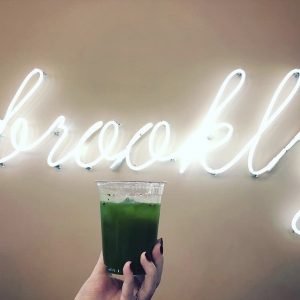
If you want to make quality matcha yourself I would suggest buying a bamboo whisk. Ceremonial grade matcha is finer than other matcha, so I use about five grams of matcha in a bowl. I add a tiny dab of raw honey to the high-quality matcha, as I like the sweeter taste, and then I add about 1oz of hot water to the ceremonial matcha powder and whisk it with the bamboo whisk until it gets frothy. That’s when it’s ready. If you’re a matcha drinker who uses whole milk for a matcha latte, specifically with a ceremonial matcha brand, I would suggest using more grams of matcha and cold water* to bind the matcha.
Quick Recipe for Iced Matcha and Matcha Lattes
For iced matcha or iced matcha latte, you’ll take a cup of ice water or iced milk and then just add the bound matcha powder into it. I prefer hot drinks to add the matcha powder mix before pouring in the water or milk. In Japan, they do all kinds of crazy stuff with matcha powders and will use a matcha latte powder that already has condensed milk in it, if you’re trying to have your matcha tea as a type of super sweet dessert drink.
What goes well with Matcha?
Over the years of drinking quality ceremonial grade matcha tea, I’ve also discovered some fun matcha combinations you can use. Mint and matcha tea for example works great together. You can actually use mint tea bags, or mint leaves and stir those into the matcha which tastes refreshing. One bakery I know of in Brooklyn uses the matcha powder along with freshly made rhubarb adding the matcha tea on top as a matcha rhubarb soda. If you decide to bake with matcha, then you can actually use the culinary grade matcha for breakfast in matcha cupcakes, matcha pancakes, matcha muffins, and matcha french toast, just don’t use the culinary grade matcha powder on its own as a drink* as a tea. I personally have tried to make a matcha seltzer, but the taste doesn’t really work well together unless you sweeten it. One interesting matcha powder combination you can do is to mix matcha in with organic sea salt and have yourself a quality matcha salt. You can use this matcha salt in baking or as an addition to french fries or as a seasoning on certain types of foods.
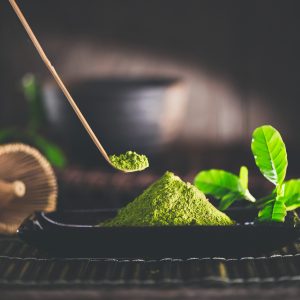
Matcha powder can also be super concentrated inside an ice cube. If you don’t feel like making matcha every morning, just measure out the matcha powder at 5 grams per cup and put the powder mix into an ice cube tray adding a tiny amount of water in each cube. Freeze it overnight and if you have a large tray, that should give you enough matcha powder bombs for the next 2 weeks. By concentrating the matcha I’ve found you actually might get a more flavorful matcha drink.
My initial search for the best matcha powders was a little tough because most shops I went here were carrying the same 2-3 green tea brands and Amazon has an excessive amount of these companies claiming to be organic ceremonial matcha. It concerns me when some people tell me they tried matcha but didn’t like the taste and gave up. There is a lot of false advertising by brands saying they’re offering the best matcha powders or organic ceremonial matcha. I personally go with the Man Eating Tiger matcha brand which I know brings in their supply from the farm in Kyoto, Japan they work with, fresh every 1-2 months.
Matcha drinkers should not be fooled by thinking bitter matcha is the more authentic matcha, because like I mentioned before, pure Japanese matcha is shade-grown and stone ground, and the longer the matcha makes it through the shading process means that this Japanese matcha should have a naturally sweeter taste* and contain L-theanine. L-theanine is another amino acid with many health benefits found in the tea leaves. The amino acid is important in transporting nutrients throughout your body to maintain your immune system.
The shorter time matcha or tencha tea leaves are shade-grown the less quality the matcha and the more bitter the taste.
The best matcha powders out there will need to be refrigerated, so don’t let it sit out on a shelf. This is another difference between regular green tea powders and high-quality matcha. If you leave ceremonial matcha unrefrigerated it will start to get bitter after about a month. I’d also recommend if you’re going to make matcha, don’t be deterred by the process. It literally takes 2-3 minutes to whisk up your drink. When buying quality matcha, I go with the 16oz matcha bag that Man Eating Tiger offers. It is more expensive matcha, but funny enough when you break it down per serving, you’re actually getting about 90 cups worth of matcha powder. If you’re just starting the matcha journey, then you can go with Man Eating Tiger 60g tin, which sells for about $40 and is a great deal for the high-quality product they’re offering. They both come with free shipping too.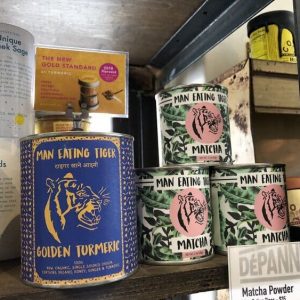
Most of the so-called “organic matcha green tea” grade powder on the market is less expensive, but if you want to make pure matcha tea at your home, think about what I’ve said earlier in regards to the shade-grown process of making matcha and what goes into it and the number of additional nutrients you’re getting. Funny enough this “organic matcha green tea” you’re buying in a 30g tin or 8oz bag, sizing wise works out to almost the same price as buying better grade matcha, that you can purchase from a quality company like Man Eating Tiger in a 40g tin and 16oz bag (450 grams) respectively. The quality you get from buying matcha direct from a trusted quality matcha brand is worth the price difference to me as a matcha drinker.
Okay so now that we’ve talked about what makes a high-quality good matcha tea and which grade matcha powder is the best, the additional concentration of health benefits you get from ceremonial matcha, what organic matcha is really about, and how raw grade ceremonial matcha tea that has a single source origin from Japan is the most important factor when qualifying organic matcha vs the US label that you can pay to stick on there. It’s time to grab a whisk, stir up some matcha and drink it daily!
| Weight | N/A |
|---|---|
| Size | 60 grams, 450 grams |

Thomas –
Without a doubt the best quality matcha I’ve ever had the pleasure of trying. If you’re looking for the best, look no further. Will definitely be ordering again.
Jose –
Attractive packaging and exceptional taste. I’ve never found another matcha powder taste this good. All my friends who try it say the same thing.
holly (verified owner) –
Like the majority of the adult population, I was a coffee addict for the entirety of my adult life. Upon growing weary of the often miserable side effects of my addiction, including jitters and caffeine headaches and the fact that over time it devolved into merely providing a bare minimum energy level as opposed to a boost, I sought alternatives to this deeply-ingrained habit. Beginning with some combination of decaf coffee, black tea, green tea, and matcha, at some point along the way, I realized this experiment was resulting in inconsistent outcomes. Somewhere in there I came upon Man Eating Tiger and read high praise about their high-quality, ceremonial-grade matcha powder, which was reported to have a smooth, almost sweet flavor without any of the bitterness I’d thought came standard based on other matcha powders I had experimented with. This description seemed appealing, so I first tried the 60g tin, and one cup later, the difference was so plainly obvious, without hesitation, I promptly committed to the 450g bag and thus began my daily ritual of making matcha each morning in the time I used to be brewing coffee, half-asleep. Since this fateful transition eight months ago, in addition to the physical and mental benefits I’ve noticed now that I begin each day with matcha as opposed to coffee, the pleasantness of this daily ritual is made sweeter by the fact that Man Eating Tiger ceremonial grade matcha is, in fact, all it’s cracked up to be – smooth, almost sweet, and deliciously nuanced, sans any bitterness you may have previously believed came with the territory (it doesn’t). This is far and above the best matcha I have ever had, it made my transition off of coffee a surprisingly pleasant one, and I have since recommended it to others who are also questioning their relationship to coffee as well as those who may not know just how good matcha can be. In fewer words: this is the best there is.
Maria –
I hesitated on getting this because of the Int shipping. My sister ended up ordering it for me for my birthday. I can never go back to my old matcha. From this point forward, I will only be treating myself to maneatingtiger. Seriously, the best matcha you will ever have <3
Shelby (verified owner) –
I am a 2x a day matcha drinker for the past 7 years. This is by far the best matcha I have ever tried. I used to buy the tins of Cha Cha Matcha until I found Man Eating Tiger. I am so glad a friend recommended them to me because they are far superior and you get a bit more for your money too.
Celeste King (verified owner) –
The only thing better than their branding and their customer service is the quality of their product. I’ve tried so many matches, and my search for the perfect one ends here.
Abigail Yoder (verified owner) –
This matcha is so above and beyond compared to any other matcha I have had. it’s absolutely amazing — I literally cannot wait to have it when I wake up in the morning!
ALEJANDRO BENCOMO (verified owner) –
By far the best Matcha I’ve ever tried. It is strong but not bitter. It gives me focus for hours without the energy spikes of highly caffeinated drinks. I discovered this Matcha in a coffee shop in Alabama. Just the perfect balance. The barista mentioned the brand and I later bought it online. The big bag (450g) lasts me around 3 months and I drink Matcha daily. My favorite way to drink it is as a latte with Oatly oat milk (iced in the summer and hot in the winter) or as Matcha lemonade.
Alaina brauer –
Had an issue with a tin a purchased from one of their supplies and they were extremely helpful & the matcha is great! 10/10 taste and customer service
Drew –
I love matcha. It’s replaced coffee for me and I cook with it often. There’s a huge taste difference between ceremonial and culinary grades with an equally huge price gap. When I found Man Eating Tiger I was skeptical of the price but decided to try it. After excitedly preparing a bowl this morning (3g tea, 100ml water @ 180F) my heart dropped with the first sip. This is not affordable ceremonial grade, it’s very expensive culinary grade.
The color isn’t very vibrant, it doesn’t froth well, the mouth feel is lackluster, and the flavor… if you know you know and this matcha just doesn’t have it. It’s sweet and tangy where is should be smooth with a rich umami that envelops your palate. There’s a distinct bitter/oxidized aftertaste of culinary grade matcha on the finish that ultimately reveals this product for what it is. It’s the best culinary grade I’ve tried as it is far less astringent than most. This product would be great for baking, ice cream, or a sugary drink, but if you’re looking for a luxurious ceremonial grade product to be enjoyed on its own this isn’t it.
Gotta shout out their excellent customer service though! Y’all are clearly good at running a company <3
Connor Evan (verified owner) –
The only matcha I buy now. This matcha has a beautiful nuanced flavor. Perfect balance of herbaceous, light natural sweetness, bright. I have 1 tbs mixed into water over ice every morning to kickstart my day and keep me going well into the afternoon. If you’re searching for matcha this is the only one to consider.
Jennifer (verified owner) –
Finally found a real ceremonial matcha! I don’t mind paying a higher price for quality sourced matcha. Man Eating Tiger Matcha hits on all aspects from being sourced authentically, taste, and quality. My local coffee shop served my first cup of Man Eating Tiger matcha before trying to find how I can order some for my home. This is the best matcha I have tasted.